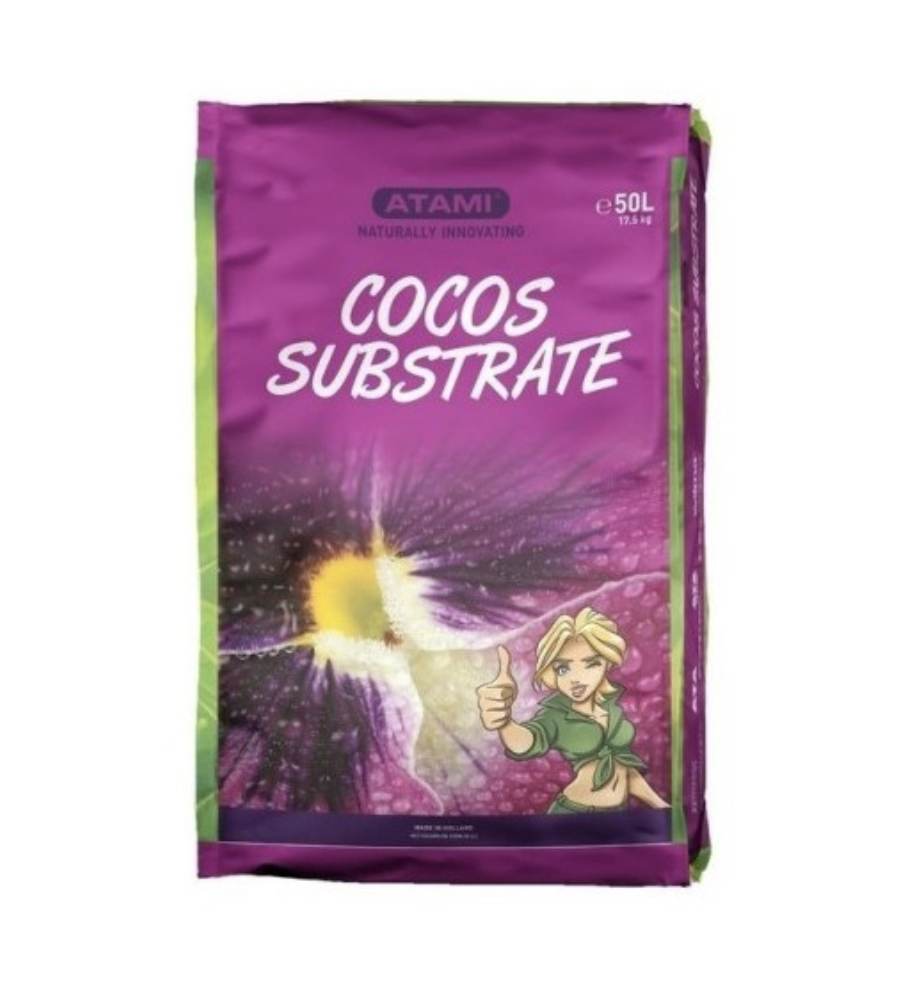Click for more products.
No products were found.
Choosing the right substrate is one of the fundamental pillars for ensuring a successful indoor grow. The substrate acts as both a physical support and a medium for exchanging nutrients, oxygen, and water for the roots.
Understanding the different types of substrates, their characteristics, and applications will allow you to optimize each phase of the grow and get the most out of your indoor space.
In this article, we’ll show you the main classes of substrates for plants, their pros and cons, concrete examples, and recommendations for choosing the most suitable one based on your growing system.
The substrate is the medium where roots develop. Unlike natural soil, a substrate used in indoor growing is selected, controlled, and adapted to the specific needs of the environment, the plant, and the cultivation method.
A good substrate should:
- Retain water without becoming waterlogged
- Allow proper drainage
- Facilitate oxygen exchange
- Have a stable and airy structure
- Be free from pathogens and contaminants
There are many classes of substrates, which can be classified into three major groups: organic substrates, inorganic substrates, and blended mixes. Below, we analyze them in detail.
This is the most used in traditional indoor grows, as it combines ease of use with good results. It’s usually made from blonde and black peat, mixed with perlite or coco coir to improve aeration and drainage.
Advantages:
- Easy to use and affordable
- Compatible with liquid and solid fertilizers
- Good moisture retention
Disadvantages:
- Requires careful watering to avoid compaction
- Can acidify over time
Ideal for: Growers looking for a balanced system without complications.
One of the most popular organic substrates in indoor growing due to its high water retention and aeration capacity. It comes from the processing of coconut husk and is available in compressed bricks or ready-to-use bags.
One of the best-known substrates of this type is Atami Cocos Substrate.
Advantages:
- Balanced aeration and retention
- Neutral pH
- Reusable with proper cleaning
Disadvantages:
- Requires fertilization from the start
- May contain salts if not properly washed
Ideal for: Advanced growers seeking full control of the nutrient system.

An inorganic substrate made from melted volcanic rock. Widely used in hydroponic systems where maximum oxygenation and root zone control are required.
Advantages:
- Excellent aeration
- High water retention capacity
- Free from pathogens and contaminants
Disadvantages:
- Not biodegradable
- Requires constant adjustment of pH and EC
Ideal for: Hydroponic systems or high-performance technical grows.
Made from porous clay balls, this is a very light inorganic substrate with great drainage capacity. It’s mainly used as drainage at the bottom of pots or as a main substrate in recirculating systems.
Advantages:
- Reusable and highly durable
- Excellent drainage
- Doesn’t compact
Disadvantages:
- Low water retention
- Must be supplemented with liquid fertilizers
Ideal for: Growers using automated irrigation systems.
Two expandable minerals commonly used as complements to other substrates to improve their structure. Perlite enhances aeration, and vermiculite improves water retention.
Advantages:
- Very lightweight
- Stable, no compaction risk
- Compatible with any base substrate
Disadvantages:
- Do not provide nutrients
- Cannot be used as a standalone substrate
Ideal for: Improving custom mixes or adjusting commercial substrates.
Before buying, consider these key factors:
Experience level:
- If you’re just starting, go for enriched soil or pre-hydrated coco.
- If you’re experienced, you can try rockwool or clay pebbles for full nutrient control.
Irrigation system:
- Manual: soil or coco.
- Automated: clay pebbles, coco, or mixes with perlite.
- Hydroponic: rockwool or clay pebbles with constant nutrient solution.
Cultivation goal:
- If you want simplicity, choose an all-in-one substrate.
- If you want maximum performance, go for inert systems with full control.
|
Substrate type |
Organic/Inorganic |
Recommended use |
|
Soil with perlite |
Organic |
Standard grows |
|
Coco coir |
Organic |
Technical coco cultivation |
|
Rockwool |
Inorganic |
Hydroponic systems |
|
Clay pebbles |
Inorganic |
Drainage or NFT |
|
Custom mix |
Combined |
Tailored grows |
In our online store, you’ll find a wide range of substrates and accessories to personalize your grow medium:
- Ready-made substrates with coco, peat, and perlite
- Compressed coco coir bricks
- Loose perlite, vermiculite, and clay pebbles
- Smart pots for improved oxygenation
- pH and EC meters for full control
Now that you know the main types of substrates for plants, their properties, and applications, you can make more informed decisions tailored to your growing style.
Remember: the substrate doesn’t just support the plant—it also defines its health, productivity, and resistance to problems. Choosing wisely from the start is the first step toward a successful indoor grow.
Please sign in first.
Sign in
Create a free account to save loved items.
Sign inCreate a free account to use wishlists.
Sign in